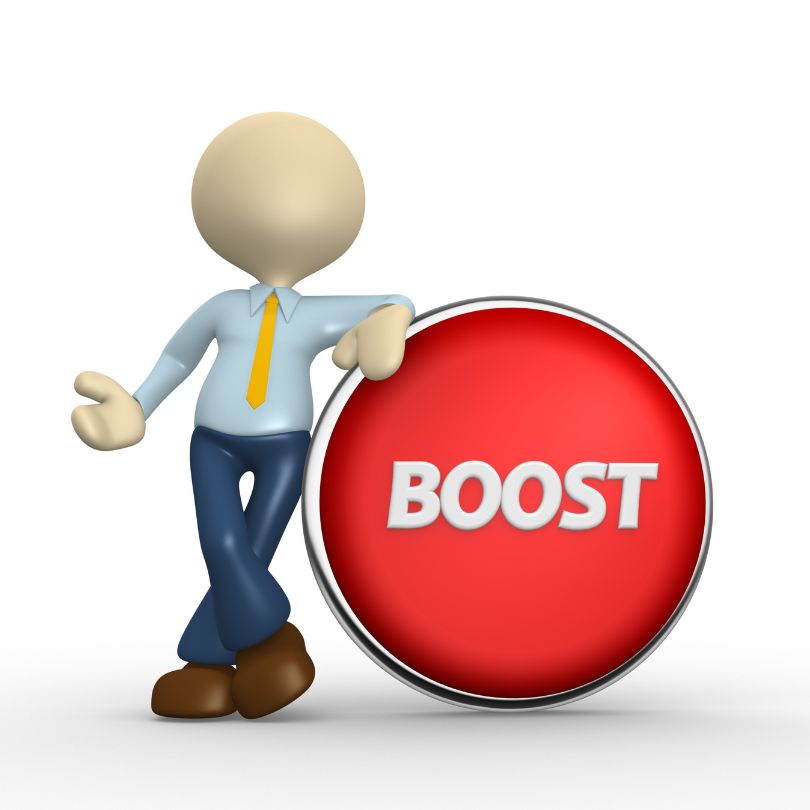
Effective Call-to-Action Strategies for Boosting Sales Page Conversions

A well-crafted call-to-action can transform your sales page from a passive information source into a powerful conversion machine. Your CTA serves as the bridge between visitor interest and concrete action, making it a critical element in your sales strategy.
Successful CTAs share specific characteristics that drive results:
- Clear and Direct Language – Using action-oriented words that tell visitors exactly what to do
- Strategic Positioning – Placing CTAs where they naturally align with visitor decision points
- Visual Appeal – Creating buttons and elements that stand out and attract attention
- Value Communication – Highlighting benefits that resonate with your target audience
- Urgency Creation – Implementing time-sensitive offers to prompt immediate action
Think of your CTA as a digital handshake – it needs to feel natural, timely, and appropriate to your visitor’s needs. The right combination of these elements can significantly boost your conversion rates and transform casual browsers into paying customers.
To illustrate the effectiveness of these strategies, let’s take a look at some examples of modern sales pages. These pages often incorporate compelling CTAs that not only guide the user but also enhance their overall shopping experience. For instance, Anstrex, a platform that allows users to find the hottest selling dropship products and manage their store from one single platform, showcases how strategic placement and clear language in CTAs can lead to higher conversion rates.
Let’s explore the strategies that make CTAs irresistible to your target audience.
Key Elements of Effective Call-to-Action Strategies
Effective CTAs are vital for converting visitors into customers. They rely on several key elements to prompt action and drive conversions:
1. Importance of Using Strong Verbs in CTAs to Prompt Action
CTAs should incorporate strong, commanding verbs that encourage immediate action. Words like “buy,” “subscribe,” “download,” or “register” clearly instruct the visitor on what to do next. This direct approach eliminates ambiguity and motivates users to take the desired step.
2. Creating Urgency to Drive Immediate Responses from Visitors
Creating a sense of urgency can significantly boost CTA effectiveness. Phrases like “limited-time offer,” “only a few left,” or “act now” instill a fear of missing out (FOMO), compelling visitors to act quickly before the opportunity is gone.
3. Communicating Clear Value to Prospects through CTAs
It’s essential to articulate the benefits or value that visitors will gain by clicking the CTA. Highlighting specific advantages such as “save 20% today,” “get instant access,” or “unlock premium features” helps prospects understand what they stand to gain, making them more likely to convert.
4. Utilizing Emotional Appeal to Resonate with the Audience
Emotional appeal can be a powerful motivator in CTAs. By tapping into emotions like excitement, curiosity, or trust, you can create a connection that drives action. Phrases such as “discover your dream home,” “join our community,” or “experience unparalleled quality” evoke feelings that resonate with visitors, encouraging them to click.
These elements work together to create compelling CTAs that capture attention and drive conversions effectively.
Moreover, understanding how these strategies can be effectively implemented in affiliate marketing can be beneficial. For instance, leveraging these 7 proven strategies to build profitable affiliate relationships can enhance your overall conversion rates by optimizing your CTAs for affiliate links as well.
Best Practices for Call-to-Action Placement and Design
Strategic placement and design of CTAs directly impact your sales page conversion rates. Let’s dive into proven techniques that capture visitor attention and drive action.
Visibility and Visual Hierarchy
- Position CTAs above the fold for immediate visibility
- Use white space around buttons to make them stand out
- Create contrast between CTA elements and surrounding content
- Implement a clear visual hierarchy with your primary CTA as the focal point
Color Psychology and Button Design
- Red buttons create urgency and excitement
- Green signals safety and encourages action
- Blue builds trust and reliability
- Orange combines energy with friendliness
- Use contrasting colors against your page background
Strategic CTA Placement
- Start: Place a CTA immediately after introducing your value proposition
- Middle: Insert CTAs after explaining key benefits or features
- End: Add a prominent CTA following testimonials or social proof
- Sidebar: Include floating CTAs for constant visibility during scrolling
Supporting Elements
- Add benefit-focused microcopy near your CTA buttons
- Include trust badges or security symbols
- Display customer testimonials adjacent to CTAs
- Show progress indicators for multi-step processes
- Highlight time-sensitive offers or limited availability
Your CTA buttons should maintain consistent styling throughout your sales page while varying the supporting text to match the surrounding context. This approach creates a cohesive experience while addressing different stages of the buyer’s journey.
Personalization and A/B Testing for Optimal Conversions
Personalized CTAs can double your conversion rates by delivering targeted messages to specific audience segments. You’ll see significant improvements when you tailor your CTAs based on:
- User Behavior: Display different CTAs for first-time visitors versus returning customers
- Device Type: Create mobile-specific CTAs with larger buttons and simplified text
- Geographic Location: Adjust pricing, currency, and language to match local preferences
- Purchase History: Show product recommendations based on past buying patterns
A/B testing reveals which CTA variations drive the highest engagement. Here’s what to test:
- Button Text: “Start Your Free Trial” vs “Try It Free Now”
- Color Schemes: Red buttons often outperform green ones
- Size and Shape: Round buttons vs rectangular shapes
- Position: Above-the-fold vs mid-page placement
- Supporting Elements: Images, arrows, or social proof indicators
Track these key metrics during your A/B tests:
- Click-through rates
- Conversion rates
- Time spent on page
- Bounce rates
Remember to test one element at a time to identify exactly what drives improvements. Your data will reveal patterns in user preferences, allowing you to refine your CTAs for maximum impact.
Reducing Friction and Improving User Experience
Reducing friction in the buying process is vital for streamlining conversions. When visitors encounter obstacles or complexities during their purchasing journey, they are more likely to abandon the process. To counter this, simplifying forms and offering multiple payment options can significantly enhance user experience and boost conversion rates.
Simplifying Forms
Simplifying forms involves reducing the number of required fields, ensuring clear instructions, and integrating autofill functionalities. For example, instead of lengthy registration forms, use minimal data collection to keep the process quick and hassle-free. Customers appreciate brevity and clarity, so make sure your forms reflect that.
Offering Multiple Payment Options
Offering multiple payment options caters to diverse preferences, making transactions more convenient. Implementing various methods such as credit cards, PayPal, Apple Pay, and Google Wallet can accommodate a broader audience. This flexibility reduces the likelihood of cart abandonment due to limited payment choices.
Creating a User-Friendly Design
A user-friendly design is crucial for minimizing friction. Ensure your sales pages are intuitive and easy to navigate. Avoid cluttered layouts; opt for clean interfaces with clear visual cues guiding users through the purchase process. Ensure fast load times and responsive design across all devices to provide a seamless experience.
By focusing on reducing friction with simplified forms, multiple payment options, and an intuitive design, you create a smoother pathway for users to complete their purchases, thereby enhancing conversions on your sales pages.
Visual Design Elements for Enhanced Engagement
Effective visual design elements play a vital role in enhancing the engagement of call-to-actions (CTAs).
1. Use Contrasting Colors
Using contrasting colors is one of the most impactful strategies. A CTA button that stands out against the background color of your page instantly attracts attention, making it more likely for visitors to click.
2. Incorporate Attention-grabbing Visuals
Attention-grabbing visuals are another key component. Incorporating images or graphics that draw the eye can help guide users toward your CTA. For instance:
- Bold and Bright Colors: Use colors like red, orange, or green to make your CTA button pop.
- Icons and Arrows: Utilize directional cues such as arrows pointing to the CTA button to guide the user’s focus.
- High-Quality Images: Include relevant and high-quality images that resonate with your audience and complement your CTA.
Visual prominence ensures that CTAs do not get lost among other elements on the page, thereby increasing their effectiveness and boosting conversions.
Conclusion
Creating high-converting sales pages requires careful planning and execution of effective CTA strategies. Your CTAs can be powerful tools for converting visitors into customers when you combine persuasive copywriting, strategic placement, and eye-catching design elements. The success of your sales pages depends on your ability to continually test, refine, and optimize these elements.
Remember these key components for maximum impact:
- Strong, action-oriented language that drives immediate response
- Strategic placement throughout your content
- Personalized messaging based on user behavior
- Clear value proposition in every CTA
- Visually striking design elements
- Simplified conversion process
Put these strategies into action, and you’ll transform your sales pages into conversion-generating powerhouses that drive real results for your business.